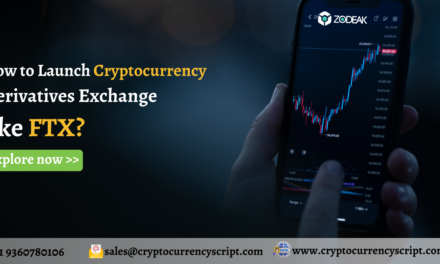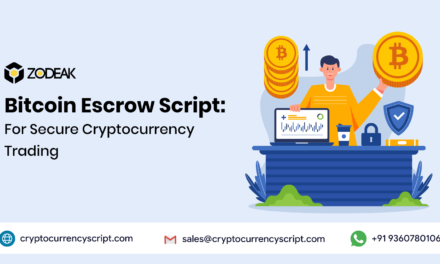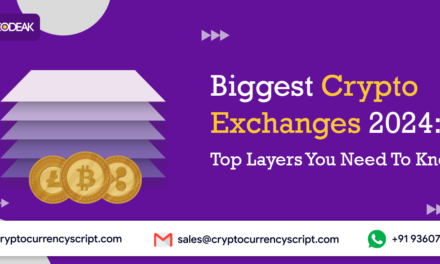The dynamic world of cryptocurrencies presents an extensive collection of investment opportunities. Perpetual futures usually called Perpetual swaps, have become a pillar in the cryptocurrency trading ecosystem.
Perpetual futures enable users to figure out the price movements of the underlying crypto asset. Holding a long or short position allows users to benefit from market changes in a way that direct asset holding cannot. These financial instruments, developed by platforms like BitMEX, offer traders an exceptional way to reflect on the price movements of cryptocurrencies without bothering about contract expiration dates.
But how precisely do perpetual futures work, and what are their advantages and disadvantages? Let’s inquire into these prospects to figure out why they are so popular and how they can fit into a trader’s strategy.
What are perpetual Futures???
Unlike conventional futures, these are a kind of futures contract that never expires. This means that traders who meet the margin conditions can keep their holdings open-ended. Usually, a funding mechanism ties these contracts to the spot price of an asset, such as Ethereum or Bitcoin.
The Funding rate mechanism:
The funding rate is a key element of a perpetual future. Traders who hold long positions and those who hold short positions exchange periodic payments. The financing rate supports fixing the contract’s price relative to the asset’s current price. Long positions pay short positions and the funding rate is positive if the price of perpetual futures is greater than the spot price. On the other hand, short positions pay long positions and the funding rate is negative if the perpetual futures price is less than the spot price.
To ensure that the two prices eventually converge, this method incentivizes traders to fix any gaps between the futures price and the spot price.
How do Perpetual Futures work???
#1 Opening a position:
On a perpetual futures contract, traders have the option to go long (Buy) and short (Sell). As collateral, they must deposit a margin, Which is a portion of the contract’s value.
#2 Leverage:
Leverage is one of the characteristics that distinguish perpetual futures. To expand the size of their positions, traders can borrow money, which can boost gains as well as losses. Excessive leverage is critical, on certain platforms, leverage can reach 100 times.
#3 Funding Payments:
Trading positions may need traders to make or receive funding payments periodically, usually every eight hours, depending on the position and the funding rate.
#4 Margin Maintenance:
Traders need to maintain a particular quantity of margin to keep a position open. To stop additional losses, the trade could be liquidated if the margin drops below a necessary threshold.
Pros of Perpetual Futures:
- No Expiry: The lack of an expiration date enables traders to keep positions as long as they want, driving it easier to incorporate long-term strategies without worrying about rolling over contracts.
- High Leverage: The opportunity of high leverage can fairly amplify potential returns on investment, forming perpetual futures attractive to traders offering to expand gains from price movements.
- Liquidity: Perpetual futures markets, specifically for major cryptocurrencies, are highly liquid. This means traders can enter and exit positions with satisfaction, reducing slippage and providing better execution prices.
- Hedging opportunities: Perpetual futures give an efficient way for investors to hedge their positions in the spot market. For example, a trader influencing Bitcoin can short Bitcoin perpetual futures to safeguard against downside risk.
- 24/7 Trading: Unlike conventional financial markets, cryptocurrency markets operate 24/7. This allows traders to respond to market movements at any time, offering greater flexibility and opportunities.
Cons of Perpetual Futures:
- High risk: Leverage that increases profits also increases losses. If the market goes against traders’ leveraged positions, they could lose all of their margins or potentially accrue large debt.
- Complexity: Comprehending the mechanics of perpetual futures, enclosing the funding rate and margin requirements, can be difficult for new traders. This intricacy can lead to costly mistakes if not properly handled.
- Funding Rate Costs: Based on market conditions, the funding rate can either be a cost or a benefit. Financing payments can mount up during times of high demand for long or short positions, thereby reducing profits.
- Market manipulation: The high liquidity and leverage can draw market manipulators who attempt to move prices to liquidate larger positions. This can build short-term volatility and unexpected price swings.
- Margin calls and liquidations: Keeping a sufficient buffer is essential. Margin calls may be generated by abrupt changes in the market, and if they are not answered right once, holdings may have to be liquidated at a loss.
Conclusion:
For traders wishing to hedge their current positions or speculate on bitcoin price changes, perpetual futures are effective instruments. They provide access to extremely liquid markets, the flexibility of no expiry, and the possibility of enormous leverage. They do, however, also have several serious hazards, such as the possibility of suffering substantial losses, the difficulty of handling positions, and the expenses related to funding rates.
It is crucial for traders thinking about trading perpetual futures to comprehend the risks and workings of the market fully. Effective risk management is essential for navigating this turbulent market, and this includes monitoring margin levels and placing stop-loss orders.
Zodeak, a leading cryptocurrency exchange development company offers many resources and tools to assist both new and seasoned traders in making educated selections for those looking to delve deeper into the realm of perpetual futures and experiment with different trading techniques. For those wishing to improve their trading experience, Zodeak is a great option because of its easy-to-use interface, comprehensive trading capabilities, and educational resources.
In the volatile cryptocurrency market, traders can successfully use perpetual futures to meet their financial objectives by maximizing the advantages and being aware of the hazards.





